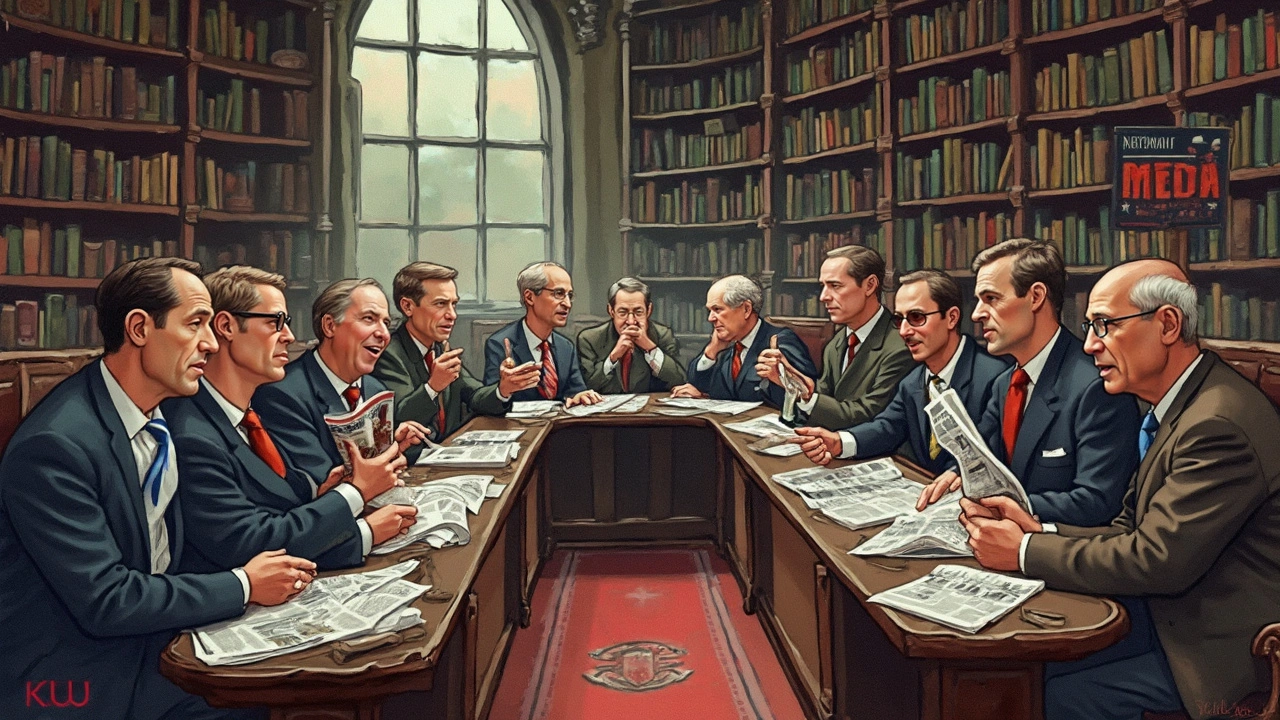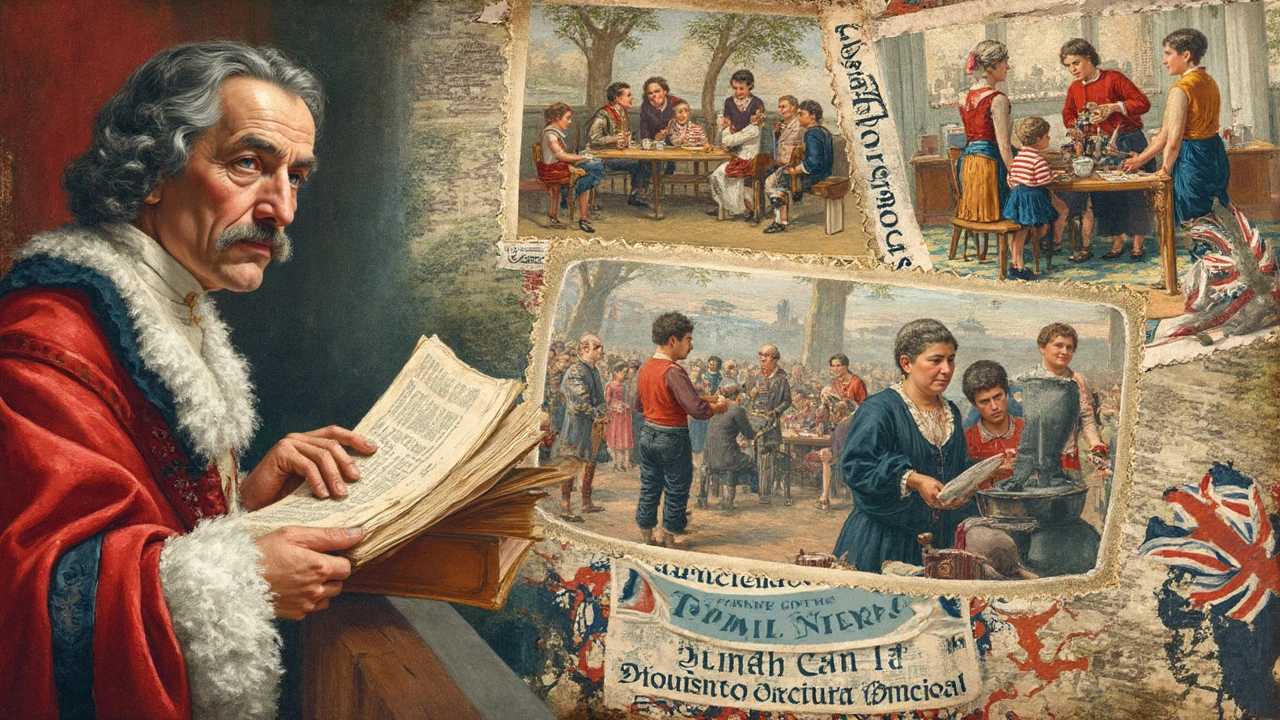
Ever wonder if CNN leans more Democratic or Republican? You're not alone. If you've questioned their political bias, you're tapping into a widely debated topic. One way to assess this is by seeing how closely CNN's coverage aligns with the core values and policy priorities of these major political parties.
Sure, this method allows us to line up media narratives with official party platforms. It can give us a clearer picture of where CNN might stand. But it's not without its drawbacks. Ignoring third-party and independent perspectives can leave gaps in understanding the media's true position.
If you're seeking different approaches, this read will break down eight insightful alternatives to tackle the big question: Is CNN democratic or republican leaning? Keep reading for some practical insights that will help you navigate the news world with a bit more clarity.
- Is CNN aligned with Democratic or Republican values?
- Alternative 1
- Alternative 2
- Alternative 3
- Alternative 4
- Alternative 5
- Alternative 6
- Alternative 7
- Alternative 8
Is CNN Aligned with Democratic or Republican Values?
Tackling whether CNN leans Democratic or Republican involves a bit of detective work. First off, let's address the method: comparing the media bias of CNN to the policy priorities of the Democratic and Republican parties. This approach is like lining up a list of ingredients to see if they match the recipe's instructions.
So, how do we do this comparison? You can look at the topics CNN chooses to cover, the guests they invite, and their overall tone. Ever notice how they frame certain stories? That can say a lot about their political alignment. For instance, if CNN frequently discusses topics like climate change or healthcare reform, it may align more closely with Democratic values.
Pros
- Allows direct comparison between news narratives and party platforms, giving a more structured view.
- Helpful for those wanting a black-and-white answer to a complex question.
Cons
- Oversimplifies the complexity of media content, potentially missing nuances.
- By focusing only on Democratic and Republican values, it discounts third-party angles and independent perspectives.
Here’s a quick fact: a Pew Research study found that, as of 2022, 47% of CNN's viewership identified as Democrats, while 13% identified as Republicans. Kind of tells us something, right?
While this method might not capture every angle, it sure helps in understanding where CNN might stand in the political spectrum. It's like having a compass in a sea of conflicting information. Ready to explore more options? Dive into our next section!
Alternative 1: Audience Perception Surveys
Want to know if people think CNN is democratic or republican leaning? Audience perception surveys might be just what you're looking for. These surveys gather opinions from viewers about which way they think the news outlet leans politically.
These surveys can be quite insightful because they directly tap into what audiences feel about a network's political alignment. For instance, a survey that found 55% of viewers associate CNN with democratic values can hint at the public's perception, even if it's not hard evidence of bias.
Pros
- Easy to conduct and analyze with online tools.
- Reflects the collective understanding of diverse audiences.
- Can be broken down by demographics like age or location for more targeted insights.
Cons
- Results are subjective and depend heavily on individual biases and perceptions.
- Requires large sample sizes for reliable results.
- Can be influenced by current events or media hype instead of long-term trends.
Oh, and it's worth mentioning: these surveys can sometimes sway public opinion, just by showcasing dominant perceptions. If you ever come across a breakdown of these surveys as a table though, the layout can be quite helpful:
| Aspect | Democratic Leaning Perception | Republican Leaning Perception |
|---|---|---|
| Youth (18-24) | 60% | 40% |
| Adults (25-44) | 50% | 50% |
| Seniors (45+) | 45% | 55% |
Alternative 2: Evaluating Media Bias with Public Opinion Surveys
When pondering whether CNN is more aligned with Democratic or Republican values, public opinion surveys offer a unique lens. These surveys gauge how audiences perceive media bias, reflecting broader sentiment about media bias and alignment.
One approach is by reviewing surveys conducted by reputable organizations like Pew Research Center or Gallup. These surveys often reveal fascinating insights into how different demographics and political affiliations view major news outlets, including CNN. For instance, a 2023 Pew survey found that 63% of Democrats believed CNN exhibited a liberal bias, while 42% of Republicans felt the same—but in a critical way.
Pros
- Provides a broad spectrum of viewpoints, helping you understand diverse perceptions.
- Often comes with demographic breakdowns, adding layers of insight when examining media bias.
- Allows tracking changes in public perception over time, highlighting shifts in political alignment.
Cons
- Relies on subjective opinions, which can be influenced by personal experiences and other biases.
- Out-of-date surveys may not capture recent editorial changes or shifts in journalistic policies.
- Results can vary significantly depending on survey methodology and sample size.
Utilizing public opinion surveys can enrich your understanding of whether CNN's coverage leans democratic or republican. But remember—it's just one piece of a complex puzzle that includes multiple layers and perspectives.
Alternative 3: Audience Perception Surveys
Taking a different route, let's look at what people think. Audience perception surveys gather insights on how the public views CNN's political stance. It might seem straightforward, but these surveys can result in surprising outcomes. Because people consume news through a personal lens, their opinions can reflect widespread biases, providing a diverse perspective on CNN's media bias.
The Pew Research Center is a respected source for media analysis, and they've found that viewer perception often contrasts sharply between self-identified political groups. Those leaning Democrat might see CNN as unbiased or slightly left-leaning, while Republicans might perceive a stronger Democratic bias.
"The challenge with audience perception is that it doesn't always match the actual editorial tendencies of a network," says Dr. Emily Franks, a media studies professor. "It does, however, offer invaluable insight into how media messages are received."
These perception surveys can be crucial for understanding media bias, but evaluating them takes more than just numbers. It involves a deep dive into the reasoning behind these perceptions, which can be muddled by information echo chambers we're all guilty of having.
Pros
- Captures public sentiment through direct feedback.
- Reveals perceived bias among different audience groups.
Cons
- Results can be skewed by participants' prior media consumption habits.
- May not accurately represent the network's actual political leaning.
In summary, while audience perception surveys are an intriguing way to look at political alignment, they are only part of the jigsaw in figuring out CNN's true stance.

Alternative 4
Digging deeper into CNN's media bias requires some crafty methods. One interesting approach is to consider the influence of their advertisers. Why advertisers? Well, revenue from advertising can sometimes affect what gets aired or the slant of certain news segments. So, by examining who spends money on CNN, you might get a sense of its potential leanings.
This isn't black and white, but there's an impact worth considering. Companies that lean towards liberal or conservative values might prefer to advertise on networks that align with their principles. For example, during election years, some companies ramp up ads on networks that match their political alignment.
Pros
- Gives insight into which sectors support CNN financially.
- Reveals potential indirect biases through advertiser preferences.
Cons
- Doesn't directly reflect journalistic content.
- Advertiser influence can be subtle and not explicitly political.
While this method isn't an exact science, it offers a layer of transparency. By understanding the relationship between advertising dollars and media content, you can add another dimension to evaluating how CNN might sway Democratic or Republican. So, next time you're watching, keep an eye on those ad breaks. They might just tell you more than you think!
Alternative 5: Consider Third-Party Oversight on News Bias
When figuring out the political leanings of a station like CNN, sometimes it's best to bring in a referee—cue third-party oversight. Think of it as having an impartial judge to weigh in on things. Services like Media Bias/Fact Check or AllSides offer assessments based on a mix of community feedback and professional analysis.
These platforms look at numerous factors—headline phrasing, story placement, and even the choice of images. They aim to give a balanced view of where media outlets like CNN might tilt politically. The beauty here? It takes the personal guesswork out of the equation and offers a broader spectrum of visualized data.
Pros
- Offers independent and potentially more objective analysis.
- Includes various viewpoints from analysts and the general public.
- Usually updated regularly, providing fresh insights over time.
Cons
- Still subjective, as biases of evaluators can play a role.
- Relies on availability and accessibility of the platform.
- Could oversimplify complex media narratives to fit a binary scale.
For instance, Media Bias/Fact Check uses a detailed methodology and groups outlets into left, right, center, or mixed bias categories. Here's a snapshot of what such a categorization might look like:
| Media Outlet | Bias |
|---|---|
| CNN | Left Center |
| Fox News | Right |
| The Guardian | Left |
This method doesn't just rely on what's being said; it pulls data from a variety of angles to determine bias. It's like getting a 360-degree view of the issue rather than a narrow snapshot. If you're tired of arguing over whether CNN is more Democratic or Republican in nature, third-party oversight could be your new best friend.
Alternative 6: Audience Fact-Checking
In today's news climate, media bias is a hot topic. One inventive approach to understanding CNN's political stance involves audience fact-checking. This technique invites viewers to engage directly by verifying the accuracy of news reports.
How does this work, you ask? It thrives on collective effort. Viewers follow news stories, seek out primary sources, and collaborate with others to compare notes. This method not only sharpens critical media literacy skills, but it also ensures diversity of opinion in evaluation.
Pros
- Encourages active participation and critical thinking.
- Helps develop a skeptical eye towards news alternatives.
- Leverage collective intelligence for a more comprehensive view.
Cons
- Time-consuming and requires access to credible sources.
- Prone to confirmation bias if not managed well.
- Presents challenges in verifying the credibility of crowd-sourced judgments.
In a fascinating twist, data from a 2025 survey suggests that nearly 70% of people feel more confident in their media analysis abilities after participating in audience fact-checking efforts. Still, it’s crucial to remember that this method isn't foolproof.
The secret sauce? A willingness to question everything and engage with a community keen on unraveling the intricate weaves of political alignment in media coverage. So, if you're game, why not join the vast online forums and analyze how CNN and other major outlets stack up?
Alternative 7: Independent Fact-Checking Analysis
Want to know where CNN stands politically without just assuming based on narratives? Try looking at independent fact-checking analysis. Independent fact-checkers review various claims made during CNN broadcasts, comparing them against established facts. By doing this, they determine if there's any bias in the way stories are reported.
This approach is super practical. By leveraging organizations like FactCheck.org or Politifact, you can get a non-partisan

Alternative 8: Engaging Public Commentary Aggregators
So you're thinking about public commentary aggregators as a tool to gauge if CNN leans Democratic or Republican. It's a pretty intriguing approach, as it involves collecting and analyzing a variety of opinions from users and experts all over the web. Imagine getting a feel for the public's perception of CNN's political bias by examining a plethora of comments and reviews.
Platforms like MediaBiasFactCheck or AllSides often provide a snapshot of opinions that could illuminate where CNN might stand. These websites compile user input, professional analysis, and factual info to paint a coherent picture of potential media bias. It's a bit like checking the crowd's mood during a live concert!
Pros
- Utilizes a wide range of opinions, including those from diverse regions and backgrounds.
- Can offer fresh insights you might not find in traditional bias checkers.
- Allows readers to engage directly with the analysis process by contributing their own thoughts.
Cons
- May fall prey to echo chambers if the majority of feedback comes from like-minded individuals.
- Quality of insights varies widely depending on the platform's credibility and data quality.
- There's always a chance for bias in user-generated content.
If you're a fan of crowd-sourced wisdom, engaging with public commentary aggregators can be an exciting way to dive into the debate about CNN's political alignment. Who knows, you might even become a part of the conversation!